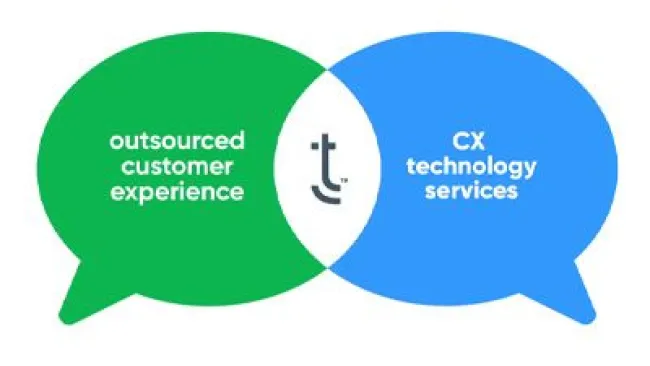Consumers live on their phones. Scratch that—consumers live FOR their phones! There are more than 4 billion users of SMS messaging, and more than 2.8 billion across messaging services like Facebook Messenger, Instagram, and WhatsApp alone. Add other services like WeChat, LINE, and Snapchat, and the figure grows significantly higher still.
What has traditionally been a consumer peer-to-peer communication channel is quickly pivoting to be a leading brand communication channel. Research from LivePerson found that 65 percent of consumers worldwide would like the ability to message with brands—growing to over 70 percent if we’re talking about 18- to 34-year-olds.
As this consumer demand continues to grow, newer platforms like Apple Business Chat and Google Rich Business Messaging are getting in on the fun and adding new features that further enrich the overall customer experience. For instance, Apple Business Chat allows iPhone users to connect directly to a brand representative at a moment’s notice using iMessage—surpassing the need to call. They can have conversations, share multimedia, schedule appointments, and make purchases. With Apple’s estimated reach of 1.3 billion devices worldwide (and growing), we see Apple Business Chat quickly evolving into a preferred customer interaction channel. Google’s My Business app also allows messaging options for business listings on its platform, and there are plans to incorporate messaging tools into Google search results as well.
Humanize digital
To harness and embrace this messaging revolution, brands’ customer experience operations will have to refit themselves to handle higher volumes of messaging interactions across multiple platforms, accelerate their use of automation in the channel, and recruit the right kind of talent to fit modern expectations. Bottom line, a successful messaging strategy will need to strike the right balance of humans and technology.
A smart approach is to have machines and humans work together in the messaging channel. For example, iterative automation layers using bots can (and should) be used to answer routine, repetitive customer service inquiries, while allowing support associates to tend to more complex interactions throughout the value chain—all the while driving a vastly improved customer experience. Apple Business Chat takes this approach to providing customer support. In fact, the Business Chat site informs users, “You might get a fast, automated response for simple requests, but a real person will be available if needed.”
As we think about the human layer in the experience, associates handling messaging need to be trained on the best ways to interact with customers via this channel. Emojis, short codes, and individuality are encouraged to be successful—very much like how they interact with friends and family in their daily lives. Associates will also need to handle multiple sessions at once and be prepared for immediate assistance. It’s a very different approach than voice, and even traditional live web chat.
Messaging myths debunked
As companies embrace messaging, there is a lot of misinformation and misunderstanding out there. Before leaping into the channel, it’s important to spot the fiction from reality when it comes to delivering great messaging experiences. We’ve debunked some of the most common messaging myths brands have.
Myth #1: Messaging = Chat
Chat is a dedicated interaction session that pops up on a brand’s website and/or mobile app. And while chat serves a purpose in the omnichannel ecosystem, these platforms often keep the customer glued to one channel, ineffectively. Users must wait with the window open for the other person to respond, and if anyone closes the window, the session is canceled with the interaction history lost. Information is not saved on the customer side and may or may not be saved on the brand side.
Messaging, on the other hand, allows for asynchronous, personal, and immediate communication between a customer and associate via a mobile phone SMS platform. This allows for an always-on connection to a brand, where previous conversations are saved and conversations can happen as easily as a text message to a friend.
Myth #2: The tech is all you need
Messaging is fun, personal, and casual. It creates an environment where users feel like they are talking to a friendly in-store associate. That’s why it’s critical to lead with customer experience strategy and design, not the tech. What journeys do you want customers to have via messaging? What skills and tone should associates have when interacting?
Don’t be so quick to offer a tool to customers that is not in good hands. Customers use messaging apps because they are easy and familiar to use, so don’t risk your brand’s reputation with a rushed product solution that hasn’t been designed to meet specific customer needs.
Myth #3: All messaging channels are created equal
Prioritize your channels to set up iteratively, not all at once. You do not need to be on Facebook Messenger, in-app, Apple Business Chat, WhatsApp, WeChat, Snapchat, Instagram, and others all at once. Each have different nuances, so prioritize, iterate, learn, and expand to new ones slowly.
Myth #4: If you build it, customers (and employees) will come
You need to direct customers to new channel(s) by redesigning your customer experience strategy to fit into their journeys. Customers need a compelling reason to use messaging. Don’t just assume they will. Make sure they know it’s there and how it can benefit them.
Myth #5: Once you launch the messaging channel(s), you’re finished
Always refine and update based on insights and feedback, especially when introducing automation into messaging. The platforms your customers use regularly are constantly evolving, so your messaging strategy needs to as well.
Myth #6: You can keep the same metrics
Metrics need to change, period. Traditional metrics like average handle time have no relevance in messaging. Your metrics need to be more outcome-based rather than efficiency-based, as consumer behavior and expectations in messaging channels are different than in voice. Good places to start (and iterate from) should include first contact resolution, CSAT, NPS, number of concurrent messages per agent, and customer effort score.
Myth #7: Voice and messaging associates are the same
Voice associates do not equal messaging associates, and to a lesser extent the same is true for chat associates. Just because you have rock star voice associates does not mean that will translate to a tiger team of associates in messaging channels. Different skills such as tech savviness, comfort with informal language and emoji-driven shorthand, typing speed, and ability to improvise and quickly problem solve are highly desirable.
Myth #8: Messaging is mostly used to resolve customer service issues
Messaging exists and thrives throughout the entire customer journey– from discovery to sale to service to re-purchase and loyalty-building. Messaging channels like Apple Business Chat, Instagram, WhatsApp, etc., are feature- and content-rich, and as such allow for some pretty cool and sophisticated interactions and experiences along all journey stages.
Get really clear on your customer journeys and key moments of truth in each. Start thinking about what’s possible beyond the obvious. Chances are that the solution(s) can be built into messaging interactions.
Messaging leads to faster, better service
TTEC messaging experts recently supported a global mobile phone service provider with its expansion of messaging services including Apple Business Chat. The client needed skilled associates who could handle multiple conversations for multiple functions simultaneously. We quickly applied our best practices across associate training, knowledge building, and performance.
The client had already engaged TTEC to provide messaging support through other platforms, and we provided training specific to Apple Business Chat, including knowledgebase optimization and mock scenarios to ensure associates were comfortable conversing on the new messaging platform. We accelerated and scaled training using AI and machine learning technology to simulate actual customer scenarios. The training was on-demand and associates received real-time feedback and coaching.
Within a few days, more than 200 TTEC messaging experts were trained on Apple Business Chat. The client entrusted our associates to handle the messaging overflow from two of their internal teams. TTEC on average handled four concurrent messaging sessions, which was four times the rate of a regular chat channel. In addition to the larger interaction volume, customer satisfaction with the channel rose to 89 percent, which was up to par with the client’s KPIs.
These results show that technology alone doesn’t improve the customer experience. While tools like Apple Business Chat make it easier for customers to reach out to brands, it’s incumbent on businesses to have highly skilled support in place to meet customers’ expectations and needs. And for most businesses, that means the right blend of humans and automation.
Send a clear message
The move to messaging as a primary interaction channel is a crucial step in the transformation of brands to truly meet customers where they are and where they want to be. But like any sport, just because you’ve seen the game doesn’t make you a pro-level athlete. The winners in messaging will be those who have practiced and understood the channel well before rolling it out. Learn the game, be open to new rule changes and adjusting your game plan on the fly, then get out there and play.















